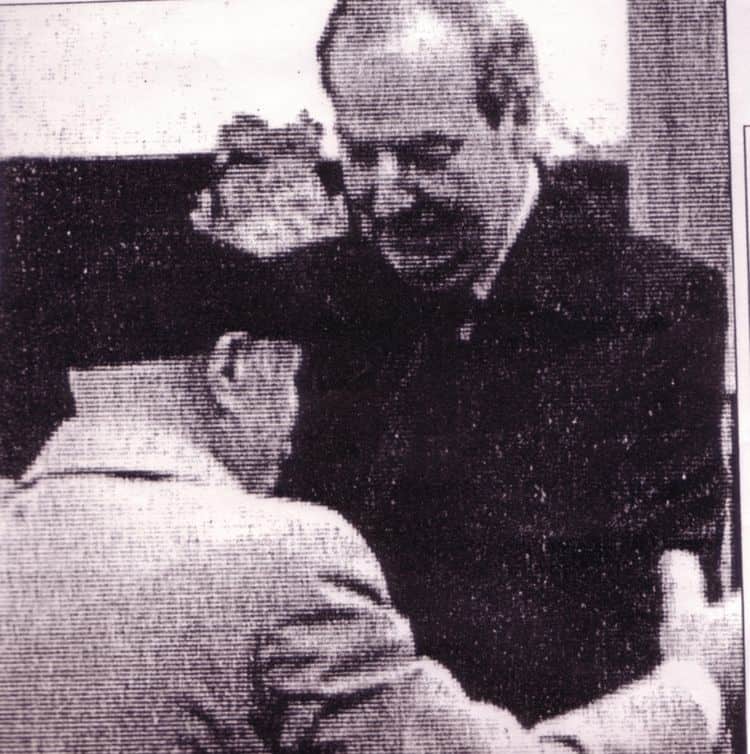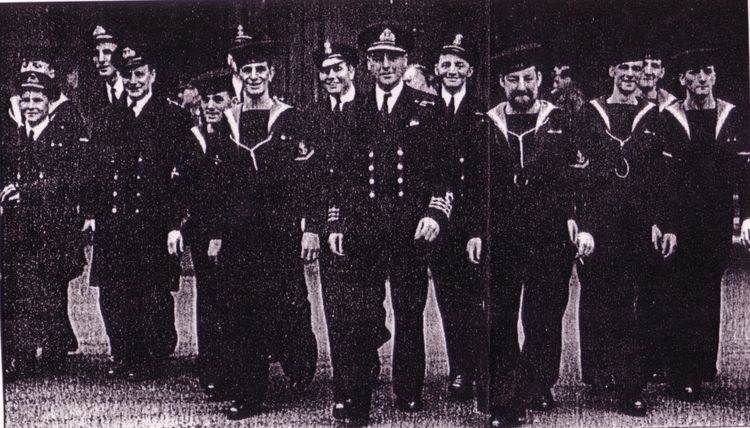It was June, 1944 - just days after D-Day - and an Allied air raid was under way at St Malo 25 miles to the south-east. But as the surfboat turned round and headed back out to sea for the three-quarter-of a-mile "pull" to rendezvous back with the gunboat, the mission suddenly' went wrong.
The gunboat's anchor dragged in the rough -weather, its walkie-talkie link with the surtboat failed to work properly and the two vessels missed each other in the gloom.
With dawn rapidly approaching, neither could afford to be seen by German look-outs on the cliffs, so the gunboat commander reluctantly gave the order to head the vessel back across the Channel to the safety of the River Dart.
Its specially quietened engines could still be faintly heard across the water by the crew of the surfboat as their colleagues retreated away and the frustrated rowers knew they had no chance of chasing after their 42-knot "mother" craft - the fastest in the four-strong flotilla.
Instead they headed back to the beach, where, despite being exhausted, they hid their own weapons and sank the tiny craft by piling it full of rocks. In charge was Guy Hamilton, then the gunboat's first lieutenant and later to become a director of the James Bond films.
In his efforts to remove all trace of his surfboat he broke a finger while hacking holes into the craft's clinker-planked bottom with a knife.
The three had just enough energy left to clamber up the cliffs above the beach and hide in the gorse, but the nezt morning they found themselves right in the middle of a German minefield.
They gingerly made their way out and, travelling by night, decided to try to make contact with the local Resistance while avoiding German patrols.
But then up stepped Marie-Therese Le Calvez, who at only 18 was rapidly becoming one of the most influential members of the Resistance in the area.
She was already a veteran of five missions to get airmen out of the area after meeting them at her local railway station, taking them to safehouses, including her own home, and then later leading them through that cliff-top minefield to meet the returning Kingswear gunboats which she would always greet by wading into the sea with a torch to help guide in their surfboats,
She and her widowed mother Leonie helped more than 140 American and Canadian airmen, plus a string of escaping agents, and the pair were key members of the "Women of Shelburne".
Later decorated along with her mother by the French, British and the Americans for their bravery, she eventually became a nun. But before her death in 1991, she talked about her exploits, including her meeting with Hamilton.
She had brushed aside her fellow Resistance worker's fears about the British sailors and volunteered to go to the pit in the field to check them out.
"Hello there," she said as she jumped down without waiting for a reply.
"I just managed to avoid them and they were very surprised. One of them said 'Well done madame,' in French that was accentless. But what had I jumped into?
"The man who had spoken was a tall young chap with a ginger beard covering his cheeks. He had bright green eyes which showed no sign of any fear. There was something about him which stopped me from being anxious and I felt confident in him at once.
"I whispered into the officer's ear that my name was Marie-Therese. He did not let me go on. A great smile lit up his face as he explained `I thought as much, you are well-known at Dartmouth in England, you know."
After reporting back to her group, MarieTherese returned to collect the sailors after nightfall and took them to her mother's home. Hamilton immediately agreed to follow her but his two crewmen were sceptical - they thought their officer was looking for romance, although they eventually agreed to go as well.
Onthe way the party heard an enemy patrol and the three men dived for cover into a 14ft-deep anti-tank ditch. Hamilton added a broken nose to his already broken finger.
Later Marie-Therese was praised by her leaders in the Resistance group, who said she had saved the network. They told her that if the three sailors had been picked up by the Germans their presence would have proved that landings were being made at Plouha and there was an organisation responsible for them.
"Our cause was won - Shelburne had been saved," she recalled.
Later the three men were switched to stay at a deserted house to avoid the Germans before being put up at the home of Mme Ann Ropers who kept them hidden for 20 days.
A message was sent back to England by the Resistance that the three were safe and the beach could still be used. After the coded message "your carrots are cooked" was sent out over the BBC, another Kingswear-based gunboat picked up the sailors, along with 15 escaping airmen.
But Hamilton's time in Plouha was not always spent in the safe-houses. Fed up with being locked inside, he got out as much as possible - and even played at the bowling alleys at the Cafe Le Meur.
Hamilton, now 76 and living in Mallorca, said: "Three members of the Resistance took me, but the alleys were very popular with the Germans. We had to wait our turn to use them when we got there because the Germans were actually playing.
"I was horrified to see the Germans there, but the Resistance bought them a round of drinks. They thought it was hilarious, but I thought it was very unfunny."
 50 years after he evaded capture in occupied France, Guy Hamilton, left, meets a Resistance worker during a reunion at Kingswear. |
 Members of the secret flotilla leave Buckingham Palace after receiving their medals. |
Hamilton remembers that while the Resistance were suspicious about the surfboat crew, the sailors were just as suspicious of the French at first. We knew there were people about who were anti-Resistance and the buzz had got around that we were hiding in the pit in the field," he said. "The real turning point came for us when we saw the blackout curtains in the safe-house.
"They were made of rubberised canvas which we had used to wrap up the equipment we had delivered to the Resistance. When we saw the curtains we knew we were safe. Quite simply, if it was not for the Resistance I would not be alive today. I owed my life to Marie-Therese. Despite her teenage years, Marie-Therese, who worked at the local Ministry of Agriculture office in Plouha, had insisted on being involved from the beginning in the Shelburne escape line. She had joined it to gain revenge against the Germans after one of her five brothers, George, a pilot, had disappeared while returning from a bombing mission for the Free French. She and her mother constantly hoped for news that he was still alive and her parting words to Hamilton as he left Bonaparte beach in July 1944 was a request to him to find out what had happened to George.Hamilton returned on another mission weeks later and after spotting the tall officer in his surfboat, Marie-Therese ran into the sea to ask for news about George. Hamilton jumped out, lowered his head and as he held her shoulders he told her that her brother was dead. Hamilton was awarded the DSC after completing eight missions to France on the gunboats and four to Norway. There were over 100 officers and men in the 15th Motor Gunboat Flotilla at Kingswear during 1943 and 1944 and over half of them went to Buckingham Palace to receive medals, which made them the most highly decorated unit in the Royal Navy. SLIPPING BETWEEN ENEMY FINGERS